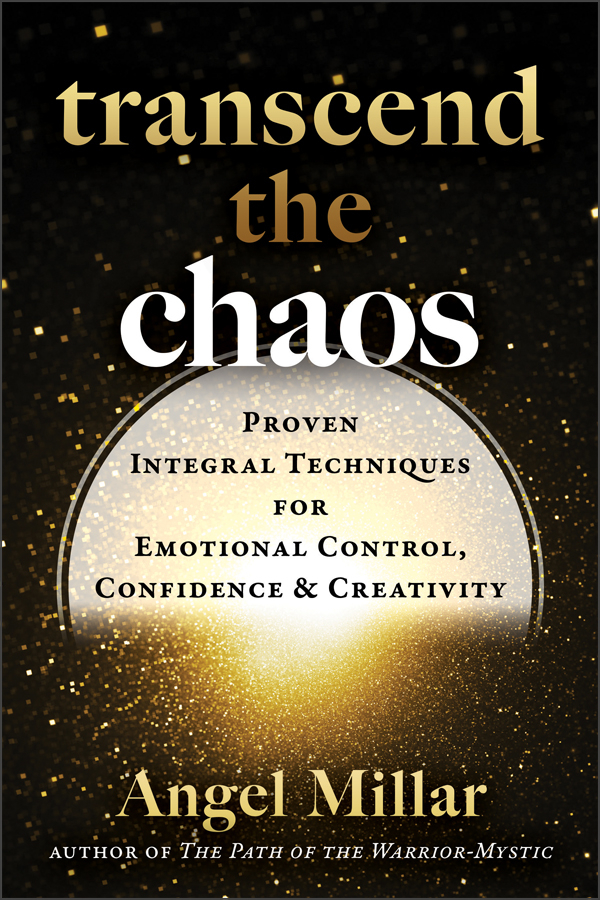- Home
- Editor's Notes
- Current Issue
- Riki Reflects
- Spiritual Traveler
- Starz Emporium
- Classifieds
- Advertise with Us
- Submissions
- Awards
- About Us
- Contact Us
How to Cultivate a Creative Consciousness for our Age of Chaos
By Angel Miller
 Creativity in children was first measured at the end of the 1950s. For four decades, it (the “Creativity Quotient” or “CQ”) consistently rose. Then, during the 1990s, something happened. Creative thinking began to decline—and has been declining ever since.In a world in which basic tasks, such as writing emails, will increasingly be outsourced to AI (along with both a degree of thinking and, potentially, a catastrophic number of jobs), creativity is likely to decline much faster.
Yet, far from a luxury or a way of seeing the world restricted to the arts, the ability to think creatively in childhood predicts, more accurately than IQ scores, which children will grow up to become “entrepreneurs, inventors, college presidents, authors, doctors, diplomats, and software developers.” The lifeblood of modern societies is the creative individual. As British historian Arnold Toynbee (1889-1975) noted in his twelve-volume Study of History, what distinguishes a civilization from a primitive tribe is the presence of a “creative minority” (e.g., of philosophers, artists, musicians, mathematicians, etc.) that introduces novel ideas and forms of creativity to their society and, in so doing, pushes it beyond its current state. Tribes, in contrast, tend to preserve the rituals, laws, and customs of their long-deceased ancestors. The decline in creative thinking over the last four decades seems particularly strange, then, since, at the same time, American education (and Western education more broadly) has moved away from memorization (or “rote learning”) and has, allegedly, reoriented itself toward critical thinking. In other words, it is precisely at the time that Western civilization has become more civilizational and less tribal that it has become less creative. But creativity is complex. And creativity for its own sake often produces little of real substance or interest except as a passing fad. “The second person to write a story about a young boy and an escaped slave on the Mississippi wasn't a novelist, he was a typist," marketing guru Seth Godin has said. Real creativity requires foundational knowledge and a high degree of skill (the former once being inculcated through memorization, and the latter now under threat by AI).
To a large degree, the decline in creativity in America (and in the West more broadly) is offset by the importation of highly educated migrants, who typically come to the US on the H1B visa program. According to the National Bureau of Economic Research, in relation to the US, “immigrant inventors produce nearly a quarter of total innovation output as gauged by the number of patents and patent citations and the economic value of the patents.” Notably, over thirty-seven percent of Silicon Valley workers are foreign-born, according to the National Immigration Forum. Creative thinking has various components: Divergent and convergent thinking, flexibility, originality, and elaboration, among them. Let’s take a brief look at these. Divergent Thinking: While convergent thinking is used to hone in on the correct answer on a test, for example, divergent thinking enables us to think up, or imagine, different possibilities. In response to the question “what is a brick for?” we might answer “to construct the walls of buildings” (which is convergent thinking). If asked “how many uses might a brick have?” we might say that it could be used in building. But we could also put it to other uses: A makeshift incense burner. A step if we need to reach just a few inches higher. A doorstop. A canvas for painting on. A bludgeoning weapon. And so on. Convergent Thinking: The inventor of the Post-It note was disappointed by his creation. He had attempted to create an extremely strong glue, and didn’t want a glue so weak that it could be used to stick paper only temporarily. Only later did a colleague of the inventor realize its potential. Convergent thinking helps creators to understand their ideas and to understand how they need to be adjusted or how they might be used (even if that is different to the original aim). Flexibility: Whether it is creating a work of art, founding a company, or launching software for accountants, during the creative process, things will go wrong. Unexpected events will take place and things that were expected to occur (and seemed integral to the process) won’t happen. A creative thinker is able to look at things differently and to find novel solutions to emerging problems, sometimes turning a flaw into a strength (hence Post-It notes). Originality: Creative people think “outside the box.” They detect the trends in their society (or globally) before other people but are not captive to those trends, and will go against them if they see an opportunity in doing so. Hence, couture fashion companies, such as Hermes, reviving traditional and once-dying crafts. Apple made white computers when other computer companies made them from black plastic. And, similarly, in 1893, the Financial Times started printing on salmon color paper to differentiate itself from its competitors (who used white paper). Originally, it was cheaper to print on unbleached, salmon-colored paper than white, but it later became more expensive. The Financial Times kept to its tradition, and kept itself distinct from other British newspapers. Originality generally means doing the unexpected. But doing the unexpected generally requires having a range of information memorized that can be drawn from—often spontaneously—at any time, thus creating novel connections. Elaboration: Once a creator or company has produced something new, it will often seek to refine it, making small changes over several years or decades, often in response to a changing environment (such as consumer demand or the emergence of new technology). Apple computers and smartphones have evolved over time. But fine artists and musicians also evolve. Picasso explored multiple genres (Cubism, Surrealism, Expressionism, etc.) and David Bowie adopted various stage personas (Ziggy Stardust, Aladdin Sane, and the Thin White Duke, etc.). There are, however, other qualities that the creative individual must have if he or she is to become successful. The first of these is unrelenting single-mindedness. Often, at least for several years, everything not conducive to the creative individual’s goal is ignored or fit in around his or her work. This usually means pastimes or “time-wasting activities” are abandoned. Relationships, too, can be sacrificed to the creator’s professional aims. Well-known figures who reportedly put their work before their spouses include Mohandas Karamchand Gandhi (better-known as Mahatma Gandhi), Steve Jobs, Elon Musk, and Jeff Bezos. Another essential quality of the successful creative person is the ability to take risks and, most especially, to risk his or her reputation in the pursuit of a specific goal, and especially in the pursuit of creating something original and previously unseen. Central Saint Martins College of Art and Design, London—the world’s most famous fashion college—is known for pushing its students to take risks. The worst thing a fashion student can do, in this college, is to play it safe. At the end of each project, students have to present their work, and must do so often to blistering attacks by their teachers, in front of fellow students. The justification for such criticism is that, once out of college, a successful fashion designer can expect all sorts of horrible things to be said about them in the press, regardless of whether it is true or not, and it is better to toughen up now. As social animals, we are naturally strongly averse to risking our reputations. Hence, when breaking with mainstream thought, individuals tend to find a new group that also opposes the mainstream culture, and will conform to it instead. Yet, risk-taking is often required in our careers. Notably, if a manager has even one international assignment before becoming CEO, he or she will be a stronger leader. Indeed, companies headed by a CEO with international experience perform roughly seven percent stronger in the market than companies headed by a CEO with no international experience. In recent decades, notably, educational institutions in the Western world have increasingly prioritized “safety” over risk-taking. “Safety” often means being “safe” from hearing opposing or controversial views (or views that certain professors dislike), with roughly 85 percent of top US colleges now having speech codes. Hostility to, and the prohibiting of, alternative voices is inherently anti-creative and is, on some level, a covert attempt to limit the potential impact of creative individuals. Although the products of the creative are often co-opted by the mainstream (hence, the use of safety pins in Punk fashion being adopted into couture), much later on, the creative individual always poses a threat to the status quo and, as such, to the uncreative individual. Bio: Angel Millar is a lecturer on self-development, spirituality, and symbolism and a personal growth consultant and hypnotist working with clients in the areas of stress management, resilience, agility, creativity, confidence, and persuasion. Raised and educated in England, and now permanently residing in the USA, he is also the author of several books, including Transcend the Chaos, The Three Stages of Initiatic Spirituality and The Path of the Warrior-Mystic. https://angelmillar.com .jpg) Angel Miller |
Share this article with friends!
|
Copyright © 1998 - 2025 Mystic Living Today All rights, including copyright, in the content of these Mystic Living Today web pages are owned or controlled for these purposes by Planet Starz, Inc. Terms of Service Disclaimer and Legal Information For questions or comment, contact Starzcast@mysticlivingtoday.com. Reproduction of this page in any form is not allowed without permission of the author and the owner of this site. All material on this web site, including text, photographs, graphics, code and/or software, are protected by international copyright and trademark laws. Unauthorized use is not permitted. You may not modify, copy, reproduce, republish, upload, post, transmit or distribute, in any manner, the material on this web site. Unless permissions is granted. |



